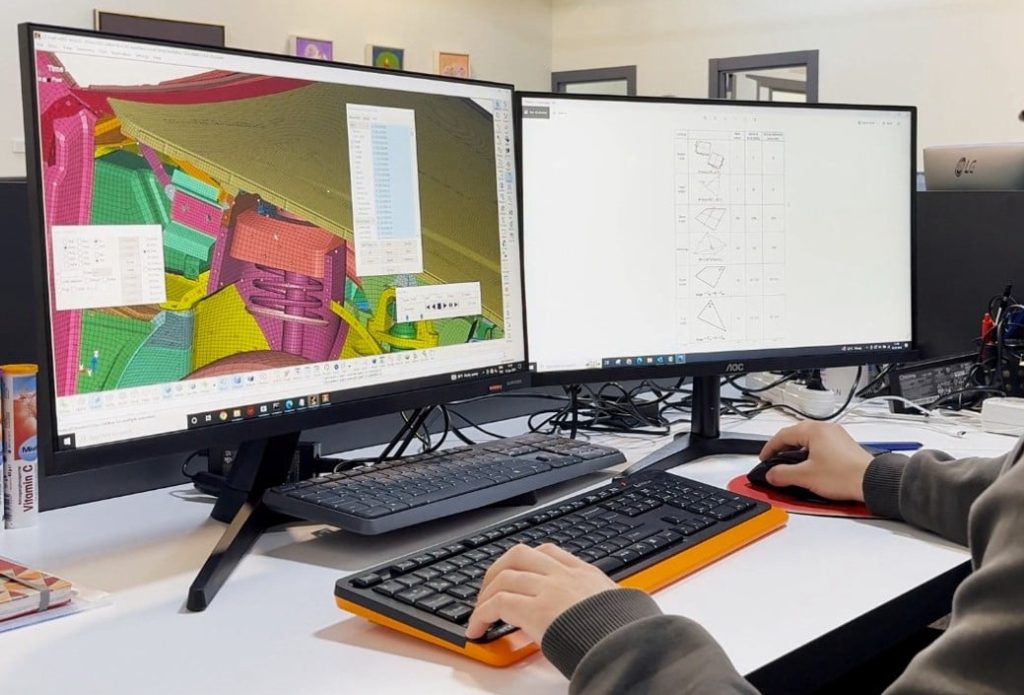Restraint Systems Development

Our Capabilities in Automotive Restraint Systems and Vulnerable Road User Protection
We deliver comprehensive engineering solutions for occupant restraint systems and pedestrian/cyclist protection. Our structured development process ensures compliance with global safety standards and top NCAP ratings:
Target Setting
We establish clear performance goals driven by market demands and regulations:
• Customer-focused safety levels aligned with New Car Assessment Programs (Euro NCAP, ASEAN NCAP, C-NCAP)
• Regulatory requirements (ECE UN Regulations, GSO, FMVSS, CCC)
• Vehicle segment and usage-case considerations
System Definition
Based on performance targets, we specify the optimal suite of safety systems:
• Airbag variants and features
o Front, side, curtain, knee, rear center airbags
o Multi-stage inflators and adaptive deployment strategies
• Seat belt technologies
o Pretensioners, load limiters, belt force adaptivity
• Pedestrian and cyclist protection
o Active hood lift hinges
o Energy-absorbing bumper and cowl structures
o Sensor-driven pre-crash countermeasures
Test Matrix Definition
We design a comprehensive test plan covering prototypes and configurations:
• Prototype count and builds for subsystem, full-vehicle, and VRU tests
• Configuration matrix covering seating positions, impact angles, speeds
• Alignment with NCAP, regulatory, and in-house performance criteria
Crashworthiness Concept
Our Body-in-White design philosophy targets controlled deformation and occupant survival space integrity:
• Energy absorption zones in front, side, and rear impact areas
• Crash box geometry and section sizing for progressive collapse
• Material selection (Ultra-high-strength steels, press-hardened steels, aluminum alloys, composites)
• Finite element analysis for section thickness and joint optimization
System Integration
We integrate restraint and protection systems into the vehicle architecture to meet crash targets:
• Harmonized deployment timing across multiple safety devices
• Mounting strategies and load path design for airbags and belts
• Structural reinforcement for sensor modules and active protection actuators
Verification & Correlation
We combine virtual and physical testing to validate our concepts:
• CAE simulations using LS-DYNA, PAM-CRASH, HyperWorks
• Virtual pedestrian/legform and headform impact models
• Prototype testing (Sled tests, full-vehicle crash tests, pedestrian subsystem tests)
• Correlation of CAE results with test data to refine simulation accuracy
Modification & Design Update
Insights from verification drive refinements:
• Adjust airbag inflator parameters, belt pretensioner forces
• Modify BIW section dimensions and material grades
• Recalibrate sensor thresholds and actuator timings
Detailed Design
We finalize detailed designs and prepare for validation and type approval:
• Release of production-ready CAD models, drawings, and specifications
